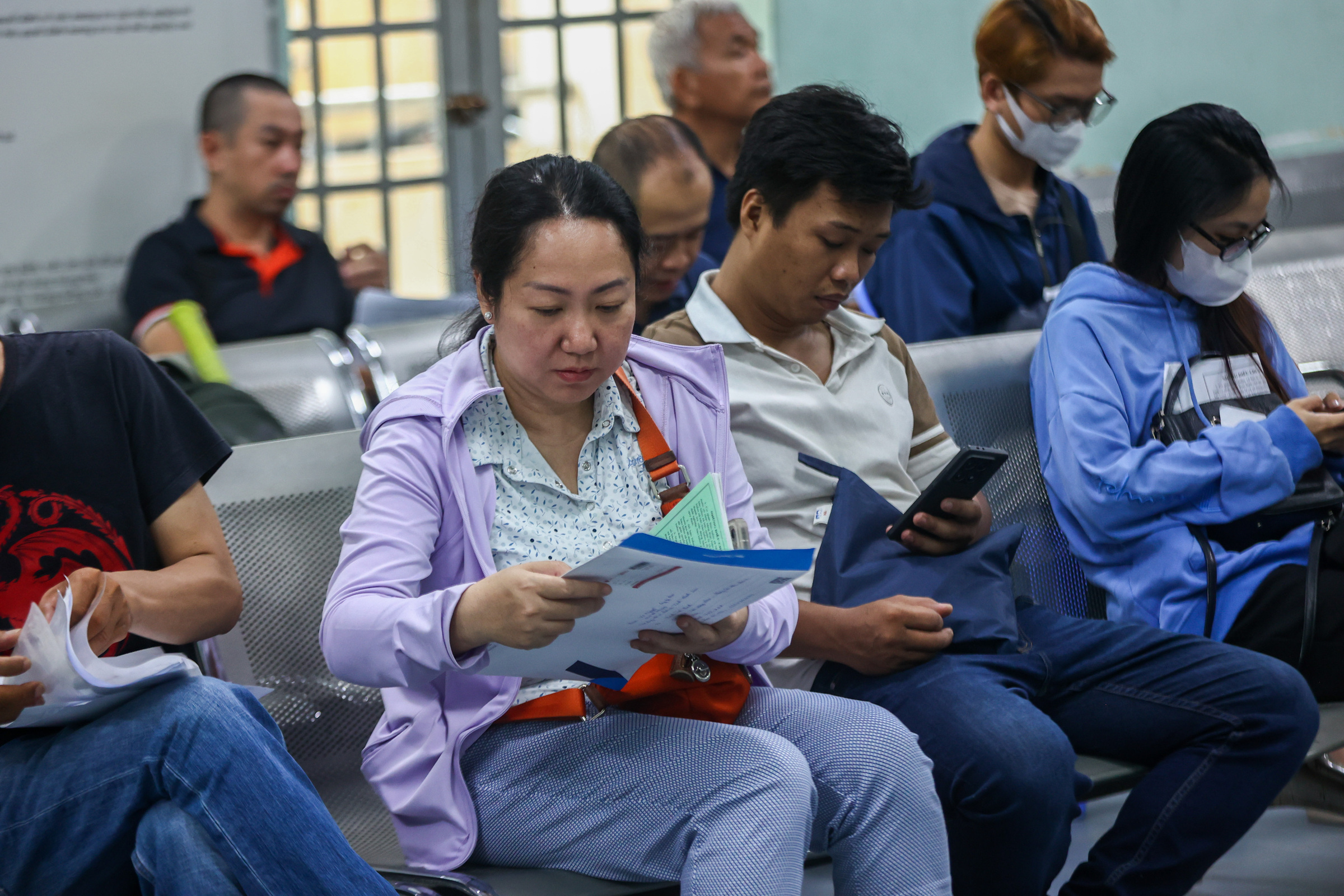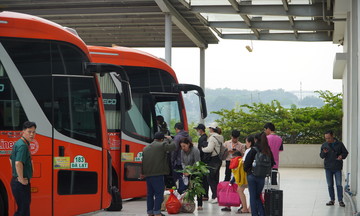This proposal is part of a report submitted to the Ho Chi Minh City Party Committee and People's Committee regarding solutions to achieve social insurance and health insurance development targets in the city.
According to Government Decree 159/2025, voluntary social insurance participants receive contribution support based on a percentage of the rural poverty line. Specifically: those in poor households residing on islands or in special zones receive 50% support; near-poor households receive 40%; ethnic minorities receive 30%; and all other participants receive 20%. The maximum support period is 10 years. Provincial and municipal People's Committees can supplement this support from local budgets depending on socio-economic conditions.
 |
Workers submit documents and complete procedures for unemployment benefits at the Ho Chi Minh City Job Service Center, Binh Thanh District, June 2025. Photo: Quynh Tran |
Workers submit documents and complete procedures for unemployment benefits at the Ho Chi Minh City Job Service Center, Binh Thanh District, June 2025. Photo: Quynh Tran
Based on this, the Ho Chi Minh City Social Insurance agency proposes that the city provide an additional 20% contribution support for workers aged 45-60, in addition to the 20% covered by the central government, bringing the total support to 40%. The goal is to enable workers to meet the 15-year contribution requirement to qualify for pensions and health insurance cards with a 95% coverage rate.
According to the social insurance agency, this support policy will reduce the financial burden on workers, especially those with low to middle incomes, encouraging participation and expanding coverage to ensure social security.
Currently, voluntary social insurance participants must pay 22% of their chosen income level (unlike mandatory social insurance, which involves employer contributions). For example, if a worker chooses a monthly income of 5 million VND, they must contribute 1.1 million VND. With the current 20% support, the government contributes 220,000 VND, leaving the worker to pay 880,000 VND. If the proposal is approved, the total support will increase to 440,000 VND, and the worker's contribution will decrease significantly to 660,000 VND.
In addition to the support policy for the 45-60 age group, the Ho Chi Minh City Social Insurance agency also proposes that after the merger of Binh Duong and Ba Ria - Vung Tau provinces, the city should use the highest support level among the three localities as the basis for developing a policy to support health insurance card purchases for people aged 60 to under 75, students, members of security and order protection teams, poor and near-poor households, orphans, and people in difficult circumstances.
To increase social and health insurance coverage, Ho Chi Minh City also proposes including these targets in the annual socio-economic development tasks and resolutions of Party Congresses at all levels. The goal is that by 2030, about 62% of the workforce of working age will participate in social insurance (with 5% participating in voluntary social insurance), about 57% will participate in unemployment insurance, and at least 60% of retirees will receive pensions, monthly allowances, or social retirement allowances.
After the merger, Ho Chi Minh City has an area of over 6,700 km2 and a population of about 14 million. The social insurance coverage rate (both mandatory and voluntary) has reached 57% of the workforce, and the health insurance participation rate is 95%.
Le Tuyet












